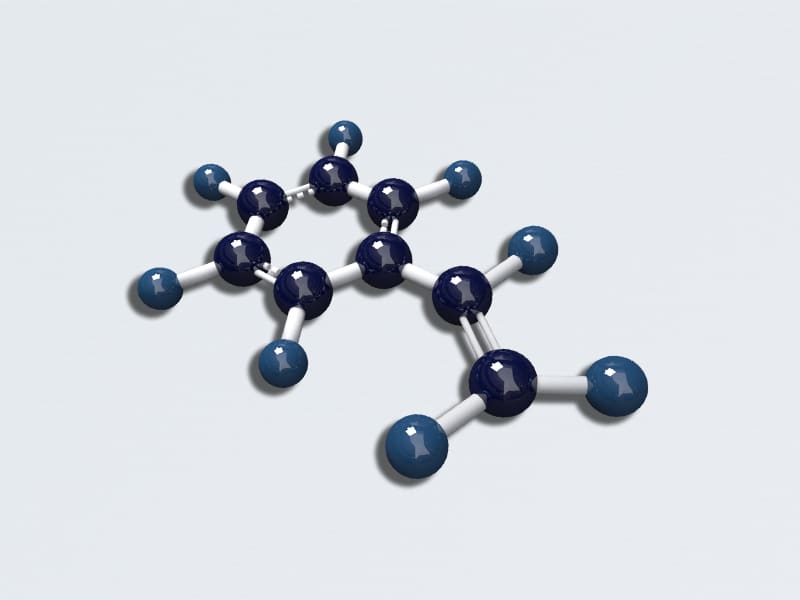
Styrene
Formula: C8H8 | CAS: 100-42-5
Detecting styrene: Very small amounts of styrene may be present in products that have been manufactured with it, such as plastics. Styrene can also be released during combustion and so may be present in small quantities in vehicle exhaust emissions and tobacco smoke.
Detecting styrene for workers safety
Styrene is a flammable liquid that is used to make polystyrene plastics, fiberglass, rubber, and latex. It occurs naturally in some fruits, vegetables, meats, nuts, and beverages.
Worker who are most likely to be exposed to level of Styrene are in the industries that make:
- Insulation
- Pipes
- Automobile parts
- Printing cartridges and copy machine toner
- Food containers
- Packaging
- Carpet backing
- Luggage
- Shoes
- Toys
- Floor waxes and polishes
Cigarette smoke and vehicle exhaust contain styrene.
Breathing air contaminated with styrene vapours can cause irritation of the nose and throat, coughing, wheezing and create a build-up of fluid in the lungs. Exposures to larger amounts can result in the onset of “styrene sickness”, the signs and symptoms of which include headache, nausea, vomiting, weakness, tiredness, dizziness, confusion and clumsy or
unsteady motion (known collectively as central nervous system depression). In some cases
exposure to styrene can also result in irregular heartbeats and coma.
– Public Health England
Monitoring workplace air conditions
A large number of workers are potentially exposed to styrene. The highest potential exposure occurs in the reinforced-plastics industry, where workers may be exposed to high air concentrations and also have dermal exposure to liquid styrene or resins.
Workers involved in styrene polymerization, rubber manufacturing, and styrene-polyester resin facilities and workers at photocopy centres may also be exposed to styrene.
Gas Factsheet
Everything you need to know about detecting styrene
Our Gas Factsheets which is available to download below provides you with key information on the exposure limits and the locations of where potentially harmful gases can occur. We also share information on gas detection monitoring techniques and equipment that can help you manage gas detection in the workplace, for worker and site safety.

Detecting Styrene
Formula: C8H8 | CAS: 100-42-5
Synonyms: ethenylbenzene, ethenyl benzene, phenylethylene, styrene monomer, styrol, vinyl benzene
Styrene is chiefly used in the manufacture of polystyrene, with large quantities used in copolymerisation with for example butadiene and acrylonitrile, to form a number of plastic and rubber materials.















